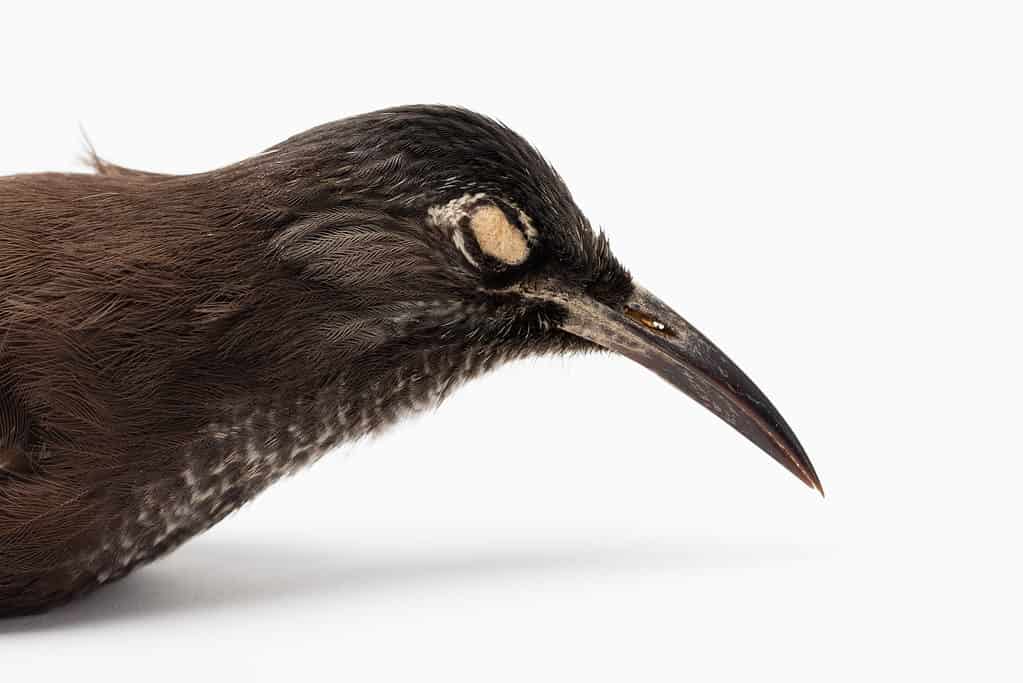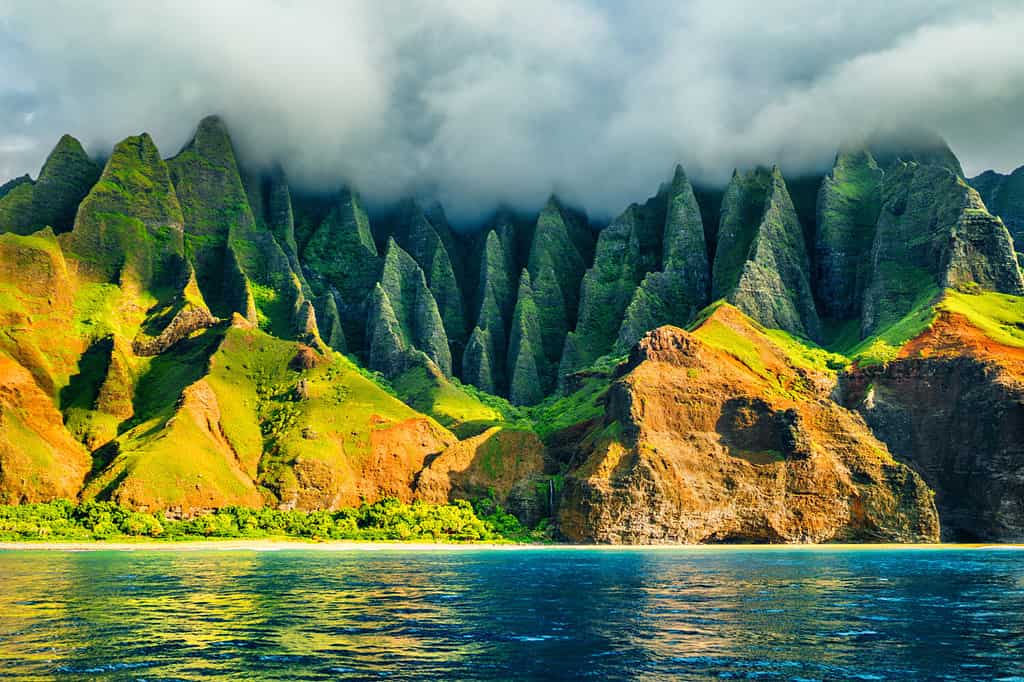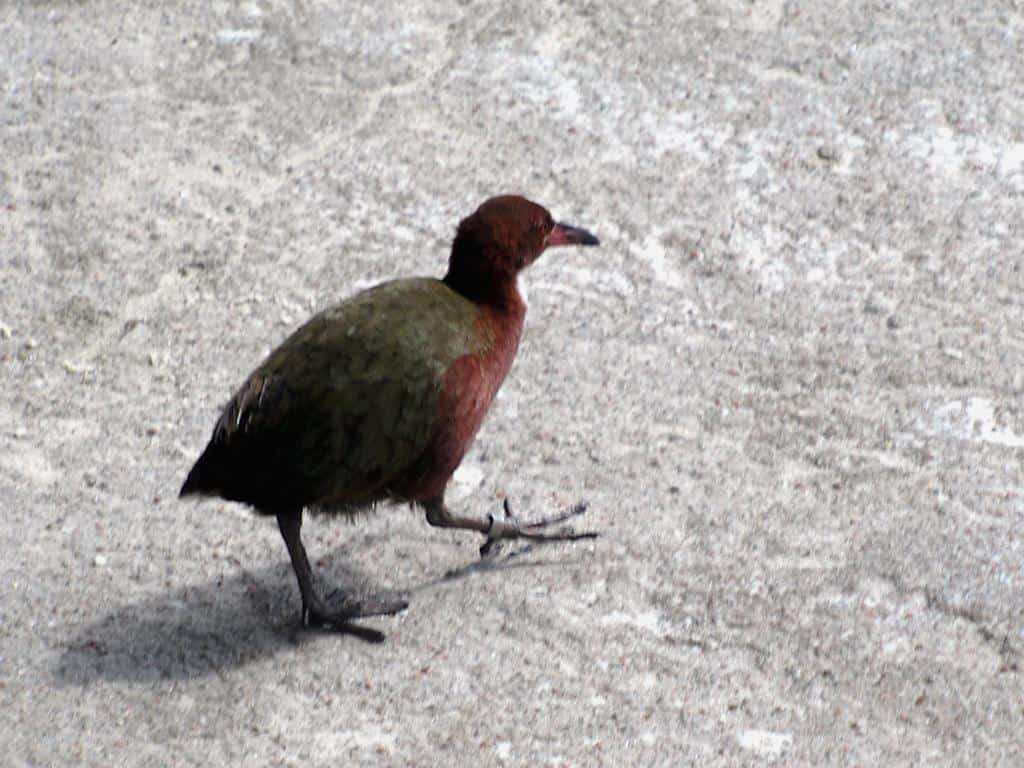Continue reading for our analysis...

As humans, we are built to be in a community with other people – in fact, it’s part of what makes us humans! In nature, there are millions of species that thrive when they have like partners around them. Unfortunately, human-caused extinction events swept the globe and impacted millions of species. As a result, it left the last isolated individuals from a functionally dead species calling out for a partner. Sadly, their song would never be returned. In 1987, researchers caught that action on video when Kauaʻi’s last ʻōʻō bird called out for a lover for the last time.
The video that captured the last song of the Kauaʻi ʻōʻō bird was taken by a team of researchers from the Cornell Lab of Ornithology. They were in the middle of a special survey of the Alakaʻi Swamp on the island of Kauaʻi, Hawaii. The goal was to set up a microphone and a tape recorder in a remote area of the swamp and record the calls of rare and endangered birds, something known as a “bioacoustic survey”.
During this recording session, on April 28, 1987, they recorded something that would be heartbreaking. The team had recorded the voice of a male Kauaʻi ʻōʻō, a species of honeyeater bird that was native to the island. What they had captured was the bird singing a mating call, hoping to find a female. At that time, the bird was considered to be near or functionally extinct in the wild. The researchers had accidentally recorded the final call of what was likely the last bird of the species on the island, totally alone.
The video was later released to the public as part of a documentary called Racing Extinction back in 2015, and it immediately exploded in popularity. Even more, there have been popular adaptations of the short clip. For example, an animated short film from 2022 dramatically tells the story of the lonely bird as it calls out for a partner. Collectively, there have been millions of views across different channels as people empathize with the sad bird.
What Happened to the Kauaʻi ʻōʻō Bird?
The Kauaʻi ʻōʻō bird belonged to the Mohoidae family. They were a group of honeyeaters that evolved after isolation from other populations in the Pacific over 15 million years. It had distinct yellow feathers and was one of the smallest honeyeaters in Hawaii. Let’s take a look at what caused this little environmental icon to disappear.
One of the main causes of the Kauaʻi ʻōʻō’s decline was the introduction of invasive predators by humans. The Polynesian rat, the small Indian mongoose, and the pigs destroyed the bird’s ability to reproduce through the predation of eggs and baby chicks.
On top of the predation, humans also introduced diseases into the native population that really damaged the population stability, most notably avian malaria and avian pox. Humans introduced these diseases through infected birds like chickens. Most of the mosquitoes and predators lived in lower areas, so the populations retreated to higher altitudes. The higher-elevation forests, however, had fewer nesting areas, and the reproduction rate dropped lower.
In another blow to the ʻōʻō, humans were actively destroying its native habitat. Finally, in a hit that spelled the end for the species, hurricanes Iwa and Iniki struck the island within a decade of each other and destroyed the specific nesting grounds required by the birds. The last female bird probably died during Hurricane Iwa.
The final confirmed sighting of the Kauaʻi ʻōʻō was in 1985 when a team of researchers observed a male bird in the Alakaʻi Swamp. The last record of the bird was in 1987 when another team captured the now-famous clip. In 2000, the bird was officially declared extinct by the IUCN.
What Happened to the Other ʻōʻō Birds?

There aren’t any Kauaʻi ʻōʻō’s, or any related birds left in the world, only models in museums.
©Auckland Museum Collections/Wikimedia Commons – Original
There were five species of ʻōʻō birds, each restricted to a single island or a group of islands. Through millions of years of evolution in isolation, they had evolved slight differences from one another (very similar to the Galapagos finches). Unfortunately, every single species is extinct, which means the entire Mohoidae family is extinct.
The Mohoidae Family
- The Hawaiʻi ʻōʻō (Moho nobilis), which lived on the Big Island of Hawaiʻi. It had yellow tufts on its in different places around its body. It was last seen on the slopes of Mauna Loa in 1934.
- The Kauaʻi ʻōʻō (Moho braccatus), lived on the island of Kauaʻi. It had yellow feathers on its wings and thighs and was the smallest species of ʻōʻō. It was the last recorded song of a Mohoidae bird in 1987.
- The Oʻahu ʻōʻō (Moho apicalis), which lived on the island of Oʻahu. It had yellow feathers on its wings and white edges on its tail feathers (unique among the ʻōʻō). It was last seen in 1837.
- The Bishop’s ʻōʻō (Moho bishopi), which lived on the islands of Molokaʻi and Maui. It had yellow feathers and the largest yellow plumes on its thighs out of all the ʻōʻō. It was last seen in 1904.
- The Molokaʻi ʻōʻō (Moho phaeosoma), which lived on the island of Molokaʻi. It had yellow feathers on its wings and a brown belly. The last sighting was in 1893.
Every single one of the ʻōʻō ‘s faced similar threats, namely, predation and disease. Humans also extensively hunted and shot the more common species for their feathers. Originally, native populations would catch the ʻōʻō and remove some plumage without killing them. When the Europeans came, they shot the birds. Sometimes, they were captured for pets but would usually die within days from mosquito-borne diseases.
Could the Kauaʻi ʻōʻō Still Be Alive?

Some people hold out hope that the Kauaʻi ʻōʻō lives on in secret.
©Maridav/Shutterstock.com
Everyone loves a little hope, but is it even reasonable to think that the Kauaʻi ʻōʻō could still be alive? Well, it isn’t likely, but it’s technically possible. In fact, before this most recent time, the Kauaʻi ʻōʻō was declared extinct twice. The first time was in the 1940s until it was later found in the 1960s. In addition, the second time was in the late 1960s until it was rediscovered in the 1970s.
Officially, it was last seen in 1985 and last heard in 1987 (the audio clip). After failed expeditions in 1989 and after Hurricane Iniki in 1992, the species was declared extinct by the IUCN in 2000.
The possibility of the Kauaʻi ʻōʻō still being alive is very slim, but not impossible. The bird lived in a remote and rugged area of the Alakaʻi Swamp, which is difficult to access and survey. Additionally, it’s possible an extremely small population has been living in some undisturbed upper region of the island, but again, these are just possibilities that could happen that we have no evidence for right now.
That being said, there are still plenty of reasons to doubt that the Kauaʻi ʻōʻō still exists. First, the bird had a loud and distinctive call which would have been detected by the surveys that happened from 1989 to 2000. On top of not hearing them, functionally, the bird also had a low reproductive rate which would have made it difficult to maintain a population size. The bird also had no close genetic relatives that could provide genetic support, either, primarily because it was a part of an ancient and isolated family of honeyeaters that no longer exist.
The Lasting Impact of the Kauaʻi ʻōʻō
The Kauaʻi ʻōʻō is most likely gone forever. However, we can still learn a lot from its absence—specifically, the role humans have in caring for the world and the creatures within it. Without the direct action of humans, the Kauaʻi ʻōʻō would still be around today. We can’t bring it back, but we can do our best to reduce harm to the rest of the ancient and beautiful species hidden in the world today.
What Bird Went Extinct and then Came Back?

The Aldabra rail re-evolved itself from the dead in a process known as iterative evolution.
The Aldabra rail (Dryolimnas cuvieri aldabranus), also known as the Aldabra white-throated rail, is a species of bird endemic to the Aldabra Atoll in the Indian Ocean. It is a descendant of the white-throated rail, also known as the Culver’s rail (Dryolimnas cuvieri), and is the last surviving flightless bird as well as the only living subspecies of its species and of its genus.
This flightless bird first became extinct about 136,000 years ago, when a flood overtook the island, submerging it, and wiping out all of the island and its inhabitants. As the Aldabra rail was unable to fly, there wasn’t anywhere it could flee to. Although animals typically do not return from extinction, the Aldabra rail resurged after 20,000 years, with help from evolution. In a process known as iterative evolution, it has a lineage that is allowed to repeat continuously in a repetitive evolutionary course.
Thank you for reading! Have some feedback for us? Contact the AZ Animals editorial team.







